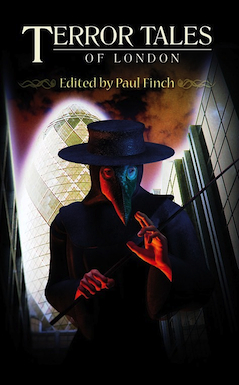I first encountered Joe Hill’s fiction through a PS Publishing sampler – I’m pretty sure it was in a FantasyCon goodie bag – that featured his story ‘Best New Horror’. I read it more from curiosity than anything. This was just around the time that Joe was ‘outed’ as Stephen King’s son, and of course there was a lot of talk of the kind you might expect from those who don’t really know or understand the writing business, about how having a famous father would probably make things easier for Hill to get on in the world. I could hardly think of anything worse, personally. To be the child of the greatest and most successful horror writer in many generations – and then to have it dawn on you that you yourself wanted to be a horror writer? I couldn’t even begin to imagine the pressure that might exert.
The fact that Hill had broken through entirely anonymously, as it were, that he’d sent his stuff off to magazines just like any other beginning writer, that he’d been determined to make his name entirely on his own merits – this act of bravery signalled his seriousness and commitment right from the outset and earned him my immediate respect. But what of the writing? Did he have the chops? Could it be even remotely possible that Joe Hill could be anywhere near as good as his dad?
I respected him, but I was afraid for him, too.
I loved ‘Best New Horror’. I can still remember the sensation of delight that began seeping through me as I read it (I think it might have been on the train on the way back from that very convention), that feeling of ‘yes!’ that always rises up, like a shout, when I read something I know is good, a feeling of triumph almost, of solidarity with that writer. I loved ‘Best New Horror’ because it read like a dream, with that easy, swinging rhythm, that facility with dialogue common to the best American writing that I love all the more because I know I can never emulate it. There was more to ‘Best New Horror’ than pure reading pleasure, though. It was also a damn good horror story that knew about damn good horror stories. The way Hill played with the tropes, the way he had a ball with them – that story had me laughing out loud with pleasure at its nudge-wink self-awareness every bit as much as it held me in suspense. It was clever, it was artful, it was beautifully written. It showed skill, and pleasure in skill’s exercise. Most of all it showed that here was a writer who knew his own mind and had his own voice. I was so impressed by ‘Best New Horror’ that I immediately went out and bought Twentieth Century Ghosts, the collection that launched Hill’s career, published by PS long before anyone had a clue who Joe’s dad was.
And bugger me if the 14 other stories in there weren’t just as good! They showed a remarkable variation in tone colour, too. Magical realism, touches of SF, straight horror, weird horror, ghost stories – all demonstrating both a hand-on-heart love of the genre and a technical understanding of it that went way beyond the ordinary. My favourite? Probably the novelette ‘Voluntary Committal’, but ‘My Father’s Mask’ is amazing too, and I would be happy to see ‘Best New Horror’ re-anthologized from here into the next century.
Anyway, yesterday evening I had the pleasure of attending an event at Foyles bookshop on Charing Cross Road to celebrate the launch of Joe’s new novel N0S4R2. Joe gave a reading from the book, followed by an interview and Q&A in which he showed himself to be as comfortable and generous with an audience as his father. (Perhaps having writing as your ‘family business’ does at least offer some help in dealing with the public aspects of the job.) He was great fun to be with, and I think the audience would have happily sat there and listened to him read for most of the night. Best of all though, he knew what he was talking about. Anyone still curious about the secret of Hill’s success need look no further than his insightful and hardworking attitude to both the art and craft of writing.
I was very pleased to report back to Chris (who sadly couldn’t be there last night because of a previous commitment) that ‘this man writes proper second drafts!’ (And third drafts, and fourth drafts.) When you hear a writer explaining how even work that might have seemed good to him first time round usually needs to be completely rewritten, you know he means business. I was especially impressed by Hill’s attitude to his early rejections, how he believed that his prentice manuscripts were ‘rejected for the right reasons’, and that it was those very rejections that helped him learn how to ‘finally write a book that other people would be excited about publishing.’
His acknowledgement that inspiration is only the start.
It was a marvellous evening, and one to remember. I am very much looking forward to reading N0S4R2.
